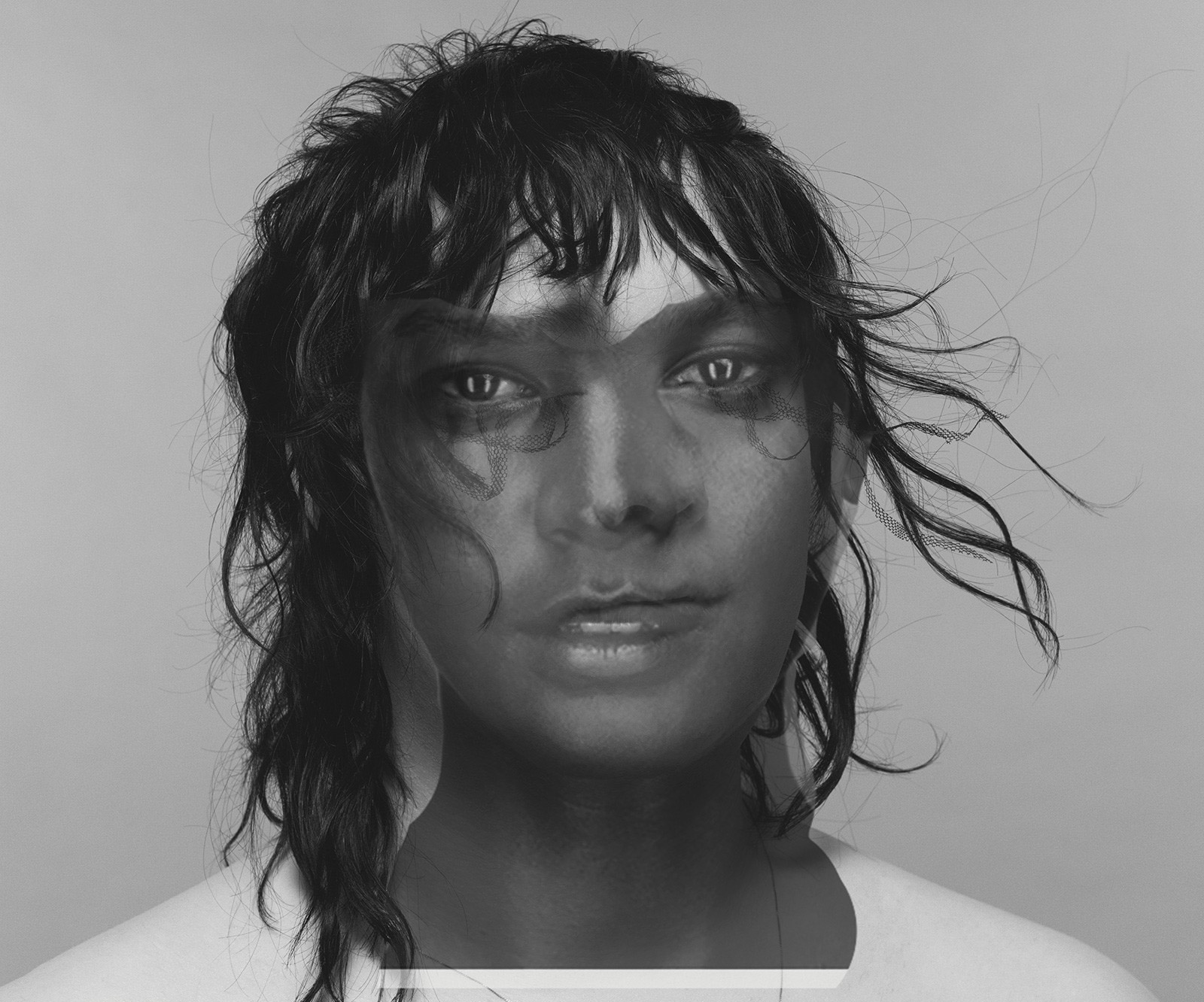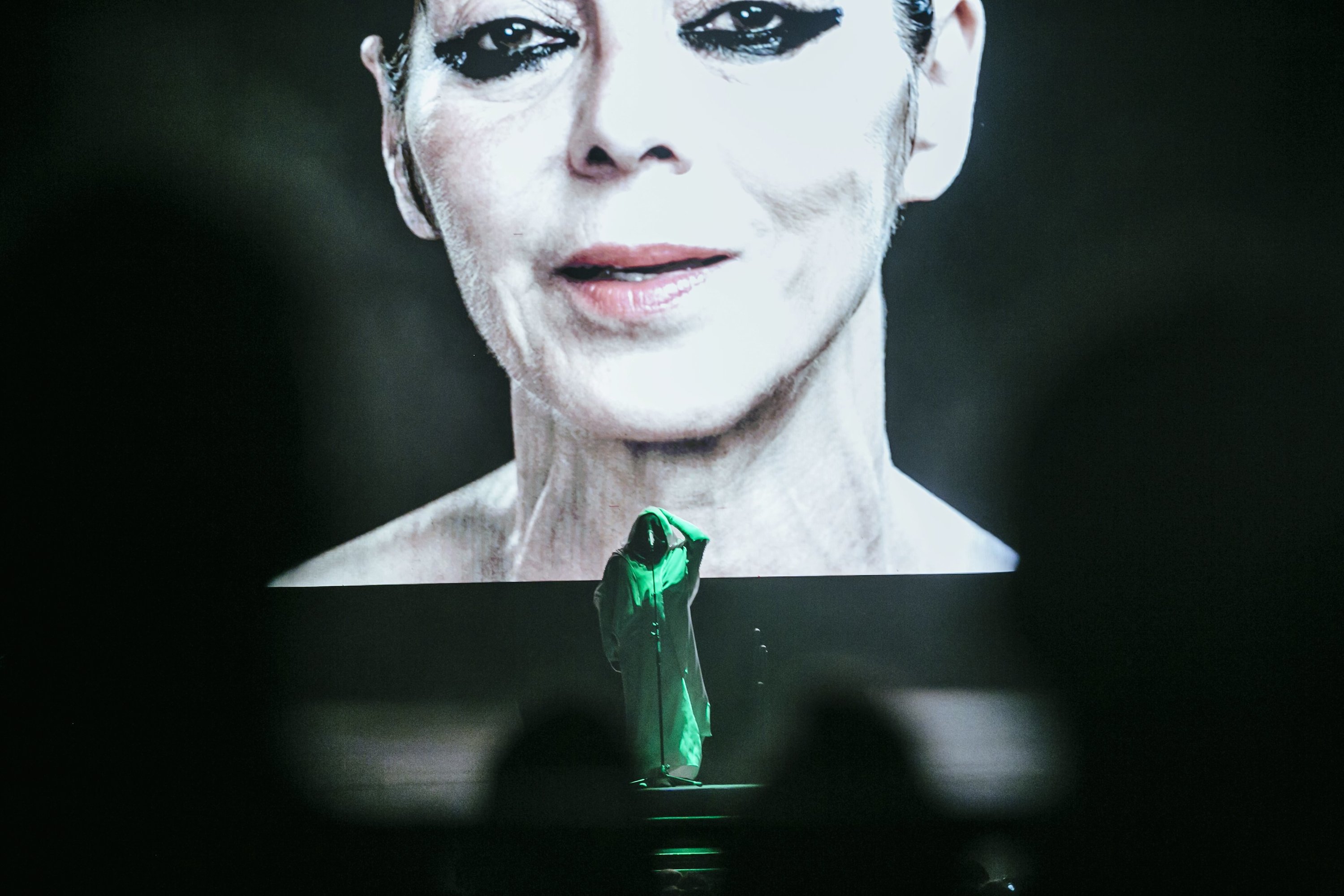In Conversation: Anohni and Lynette Wallworth
Anohni discusses Hopelessness and the fragile world we live in today with Australian media artist Lynette Wallworth
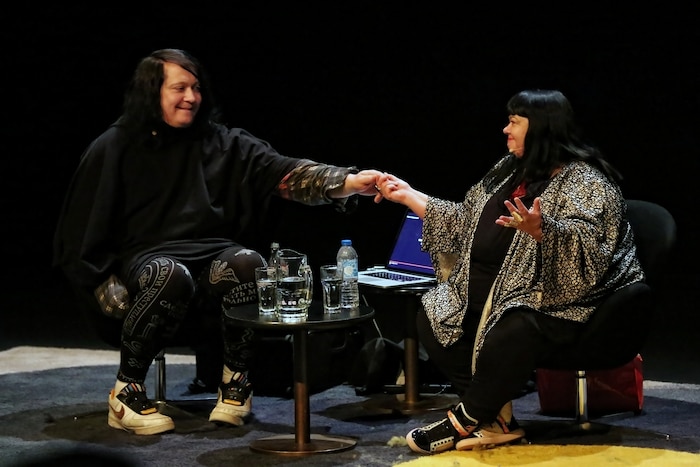
Anohni’s incendiary album, Hopelessness, produced by Hudson Mohawke and Oneohtrix Point Never, has captured audiences worldwide for its radical sonics and timely thematics. Since her debut live performance of Hopelessness at the Red Bull Music Academy Festival New York earlier this year, Anohni has been exposing audiences to the album’s messages and publicly contributing to a complex conversation about the world we live in today.
Sydney-based media artist Lynette Wallworth is a friend and collaborator of Anohni’s, and is committed to the causes close to Anohni’s music. In 2013, Wallworth introduced Anohni to members of the Australian Martu community, and Anohni later undertook a seven-day, 100km walk in the Western Australian desert with 100 other artists and activists to protest the proposed Kintyre mine.
Anohni and Wallworth’s mutual interests in ecology, humanness and artistic expressions of identity and selfhood come together in conversation. Ahead of the Australian premiere of Hopelessness at the Sydney Opera House in May 2016, as part of Vivid LIVE, Anohni spoke to Wallworth about the album and the themes within it.
Anohni
It was interesting to do Hopelessness in the [Park Avenue] Armory. There were times where I felt a feeling that I’ve never felt before. It was a volatile, almost dangerous feeling: where layers of reality seemed to be shattering around me, as the words were coming out of my mouth. I didn’t know if they were breaking to reveal clearer realities, or whether they were just breaking. It felt really scary. It felt like a conversation with power, but I didn’t know what the end result of it would be. I couldn’t control it entirely. It had this volatility that overwhelmed and exhilarated me – and scared me, because I wondered why I was trying to harness this.
What did I want from this? It was something that I had to get clear as I stepped around on the stage – with such wieldy songs, saying sometimes such toxic things – and using creativity to manipulate truth. My choice of words makes a big difference in how a thing is perceived. I have a knack for framing things with a terrible bite – to amplify or to focus the brutality of the thing.
Is that helpful? Or should I choose more benign words like they do in the newspaper? Or do I soften it… what’s helpful? All I can say is that I’m not asking the world to be more vigorous than I am being with myself, and that’s mooring me and anchoring me – this sense of excavating my complicity. At the end of it I’m saying, “This is inside me, this is my brokenness, this is in me.” And I’m not saying this to be self-lacerating. I’m saying it because I want to develop beyond this. I want to clean this wound.
Lynette Wallworth
Yes, I understand. You want to break it again, you want it to heal differently. I think that’s why I wanted to ask you about Johanna Constantine. After Naomi Campbell, is Johanna the first portrait?
I wanted to evoke the resonance of a feminine oracle with many faces.
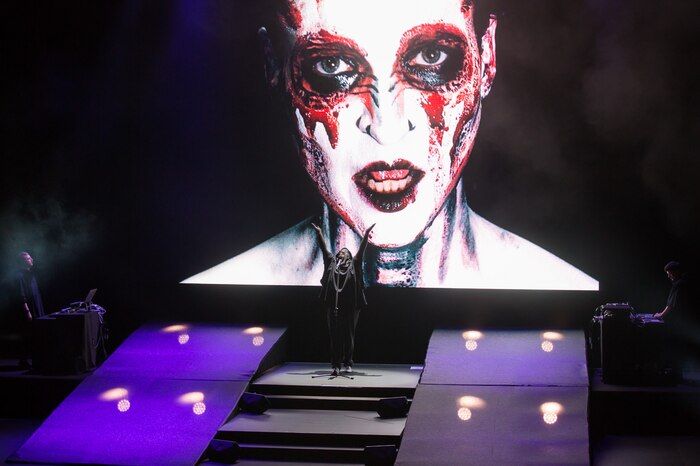
Anohni
She’s the main one.
Lynette Wallworth
The impression of the bloodied face… just to start the process with that…
Anohni
This has been her work for 25 years or more. I’ve always had Johanna come out in the beginning of my show.
Lynette Wallworth
Always?
Anohni
Always – as the Kali-esque figure, as a foil for my tenderness. She was the defender, the armor. But Johanna’s role in this show is so different. She is the work itself.
Lynette Wallworth
When we talked about it in New York, these women were representing aspects of you. Johanna Constantine would be there first, representing this bleeding self, torn open…
Anohni
But not just victim…
Lynette Wallworth
No…
Anohni
For me, her image is intensely powerful. She is the destroyer and also the survivor. She’s human will, the animal kingdom, the brutality of nature, a deity. It’s kaleidoscopic to me – her image, and the way it ricochets. When you say the women are just aspects of me, I haven’t totally reconciled that in my own mind yet. It’s so new. It’s so fresh. I know I assembled this cast, this constellation of women, because I wanted to evoke the resonance of a feminine oracle with many faces.
I didn’t want it to be contained by a conversation about a transgender American artist and her point of view. In that regard, it’s sly and manipulative. I’ve been criticized in a couple of articles for that. “She’s transferring her voice onto the images of all these women. She’s appropriating their narratives and transferring her own truth onto them.” I hear that critique, and I’m interested in it, and yet I reserve the right to be an artist and to create a work of fiction.
We changed some directions, but we didn’t change our minds.
Lynette Wallworth
I felt those women were then speaking for me. I felt like that could be my voice, too – part of what I want to say. Even if it was you singing, the translation onto other women made me feel like I had a place there, too.
Anohni
In the critic’s mind, by assigning my voice to another woman’s image, the voice trumped the image and took ownership of it. What about the possibility that, by assigning the image to my voice, the image trumps the voice and takes ownership of it? Do you know what I mean? The critique deprives the participants of agency. They’re my collaborators and, to me, the interaction of the image and the voice is more alchemical and consciously enacted than that.
Lynette Wallworth
I know we talked about [Wallworth’s video installation piece] Evolution of Fearlessness. For me, that one woman’s face can represent another woman’s story was part of the way Evolution of Fearlessness was built. There was this series of stories. You didn’t know which of these women was representing which story, and nor did it matter to those women or to me. They didn’t need to be the hero, but neither were they the victims of their own stories. They were representing a state which they all had in common.
I was there when you were shooting Shirin [Neshat]. She’s completely in control of what she’s giving that camera and offering to the work. I can only imagine that was the case for the other women that you filmed. They were aware of what it was they wanted to gift to the work. We’re following instincts a lot of the time. I tell people it’s a bit like tracking something: something calls your name and you follow it. I get a glimpse of it enough to know what it is.
Anohni
Right – and not to absolve me of my responsibility to content, but I do reserve the right to not know! To say “more will be revealed.”
Some have criticized the project by saying that by addressing so many different issues on a record, there’s not much room for depth in these investigations. But they’re missing the point that I wanted to address – the constellation of crises as a single system.
Lynette Wallworth
And to say there will be a mystery there. I saw David Suzuki at the Sydney Opera House a few months ago, and he was talking about the achievement that had been made by environmentalists in the ’80s and ’90s. He said we changed some things, made some things stop, had some successes. But he felt what we didn’t do is change our minds. We changed some directions, but we didn’t change our minds.
Anohni
I relate to thinking that that is the crisis we still face. We may have adjusted a few policies, but we haven’t addressed the inexorable underlying systems.
Lynette Wallworth
And what’s beautiful is that David Suzuki is 80 years old now. So this is the thing you’re saying – when does urgency hit? Not that he hasn’t been this voice, but to hear him stand up and say, “Yes, it was great that we stopped this destruction here or that thing happening over there, but actually, it just moves to something else because we didn’t change the way we think.”
Anohni
It’s like trying to keep the ocean at bay with a broomstick. You sweep out one wave and all the others pour in around you. That’s really what we’re dealing with: an ocean of dysfunction, with a powerful set of conditions that bind all these issues together. That’s what I wanted to address. Some have criticized the project by saying that by addressing so many different issues on a record, there’s not much room for depth in these investigations. But they’re missing the point that I wanted to address – the constellation of crises as a single system.
That income disparity, nuclear power, global warming, corporate sovereignty and exploitation, capital punishment, patriarchy, mineral and fossil fuel extraction, the subjugation of women, surveillance, racism, unregulated end-game capitalism, colonialism and the assault of indigenous communities, the destruction of biodiversity, the collapse of forest and ocean systems, drone warfare, consumerism, addiction and the weapons industry make up a bouquet of issues forms. It is a unique syndrome: a system, a new disease.
With AIDS, they were first like, “What, you’re dying of pneumonia? Oh wait, he’s dying of kaposi sarcoma, oh wait you’re dying of toxoplasmosis,” and then one day they said, “Oh wait this is a system, a syndrome of symptoms that could be identified as a single disease. A single disease called AIDS. And that’s what we’re dealing with.” The insidious collaboration of a thousand faces, of our brokenness that climax in ecocide. Ecocide is the final result of these systems of brokenness. It seems to be what you’re talking about, and what Suzuki said.
I remember when my father would say, “When I was a kid in London, the air was so choking. Now, the Thames is relatively clean. There are even fish in there.” So if he’s to trust the evidence of his own senses, and he sees that a local issue has been addressed, he deduces that things are getting better - all is well.
Lynette Wallworth
But in the whack-a-mole version…
Anohni
In America they say, “This week, there has been less police brutality against children of color, therefore things are getting better. Transgendered people are allowed to use restrooms in certain states. We have elected a black president. Gay people are allowed to get married. Therefore, things must be getting better.” The parties and the powers that be even manipulate us with these little symptoms of social change. But look at the conversations that are allowed to transpire versus the ones that are silenced.
The one that was ultimately silenced was that of the Occupy movement. Occupy was wiped off the face of the earth by Obama’s government because it said, “This isn’t a conversation about working class and middle class people in constant warfare with each other. This isn’t a conversation about the threat that different races and creeds pose to each other. This is a conversation about how the vast majority of people on this planet are being manipulated and mined by a few, stinking-rich people.”
When that conversation started to spread like wildfire and be addressed in the media, it posed a threat. The potential to empower felt so tangible because, suddenly, Americans weren’t divided into 50% Republicans and 50% Democrats. Instead, the country was suddenly reorganizing itself into the vast majority of people versus a tiny handful of players behind a gilded curtain, pulling the strings. In America, the powers-that-be would always rather we talk about social inequalities around race, gender and sexual orientation, reproductive rights, immigration and terrorism during an election cycle, rather than they would have us talk about money and how it’s earned, spent and shared.
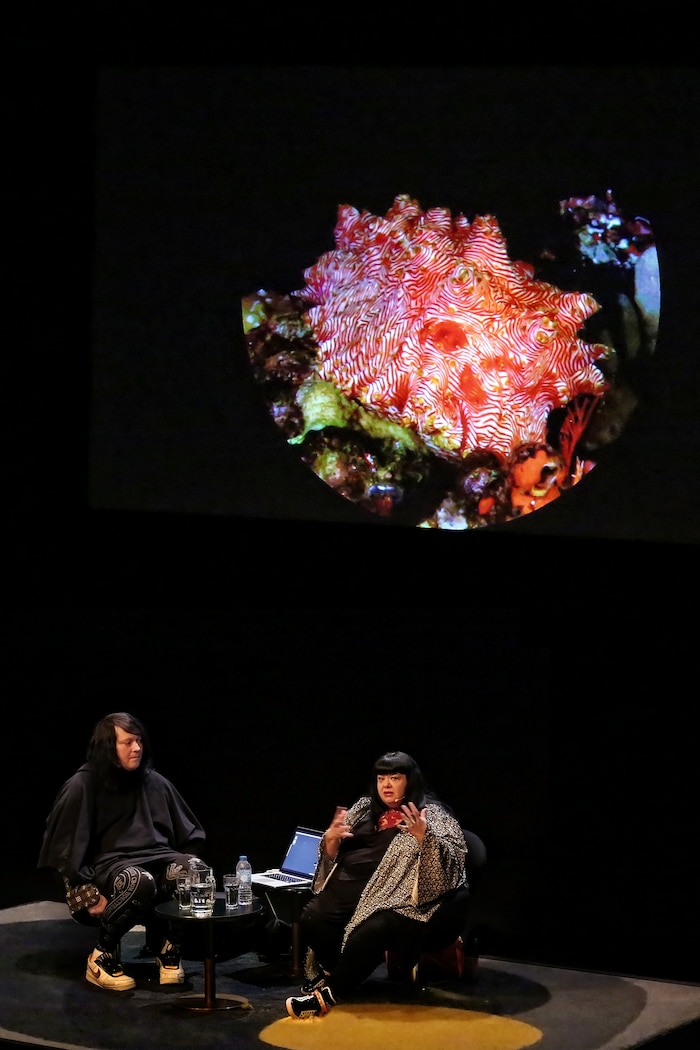
Lynette Wallworth
Thinking about Hopelessness in a different way, [the work] means to confront hopelessness, not to look for progress here when something else has arisen over there. Hopelessness means that the entire system is in collapse — like what we were talking about the collapse of the bee colonies.
Anohni
If we’re saying that these elders are expressing regret and pain upon realizing that they hadn’t been effective in addressing the underlying systemic problems – where does that leave us as artists with any agency in 2016? How do I participate now, knowing that David Attenborough is looking forlornly at the world?
Lynette Wallworth
90-year-old David Attenborough, 80-year-old David Suzuki.
Anohni
What is hopelessness but a feeling? It doesn’t have much bearing on what’s to come. Nature doesn’t feel it; she just continues. Is hopelessness the point where I disconnect from reality? Or is it the point where I finally reconnect to my true feelings such that I can reengage? Is it by recognizing my hopelessness that I re-engage with the earth?
Lynette Wallworth
That’s what I’m understanding from the way you’re talking about this. About connecting with hopelessness, understanding my hopelessness.
We are heavily armed infants in the sandpit.
Anohni
I don’t know if that [counts] for others, but right now it feels like it’s my truth. I spent so many years feeling despair, and yet feeling too unqualified and afraid to really talk about it. Is this really going to come to pass? What can I do? How can I be useful? How can I put my life to some decent purpose? And not just to compensate for the actual footprint of my life on earth, not just out of guilt, but out of my deepest love of this place. When will I come into alignment, as you said?
Lynette Wallworth
Into convergence, yes.
Anohni
When will those things finally converge? So that I can be whole? So maybe I was lying to myself when I thought this work was for the rest of the world.
Lynette Wallworth
That makes me think about [indigenous Australian artist] Ngalangka Nola Taylor, and her reflections at the end of Hopelessness. Your friendship with her, our friendship with her, comes from visiting her country and sitting with her inside that complex, communal belonging to place. She’s talking about people observing those systems and asking, “What’s going to happen?” The idea of the automated, the remote human, is completely foreign to her.
Anohni
When Nola speaks, she uses simple words that have the organic resonance of poetry. Each word causes a ripple effect that suggests multitudes of meanings, in the way that a bee would have dust or mites attached to its tiny antenna that connect it to a million other aspects of life, in and around the life of a single bee. This massive swirling vortex of interconnectedness that is poetry. That is the basis of creative expression. It’s the abundance of creativity itself.
When Nola speaks, she walks through that kaleidoscope of creativity. We think we’ve got it all locked down. We fantasize that we have a command over empirical truth. That we wield this patriarchal clarity. That our rationalizations can be upheld and quarantined from every other truth. That they are the last word on the truth about reality. But we haven’t even scratched the surface of understanding what is going on. We are heavily armed infants in the sandpit.
